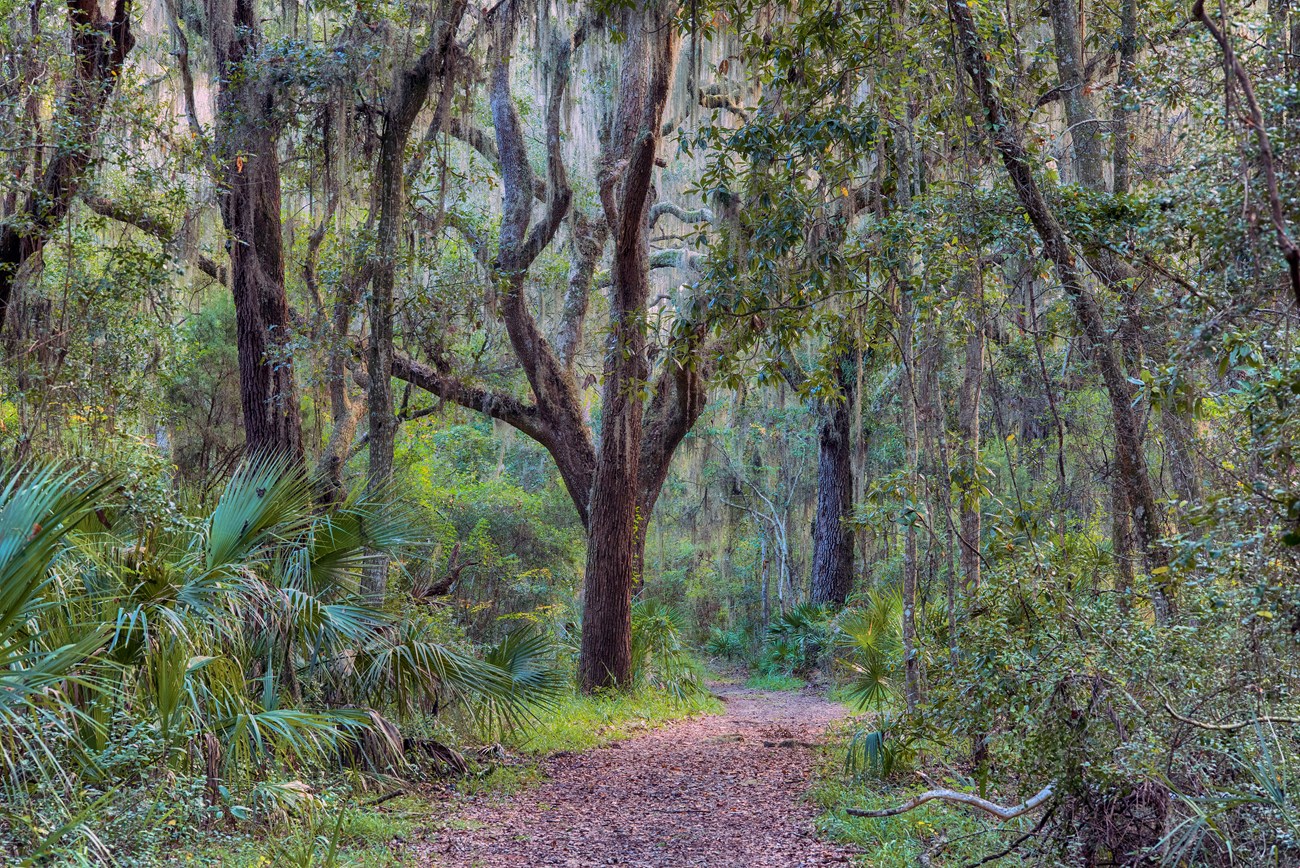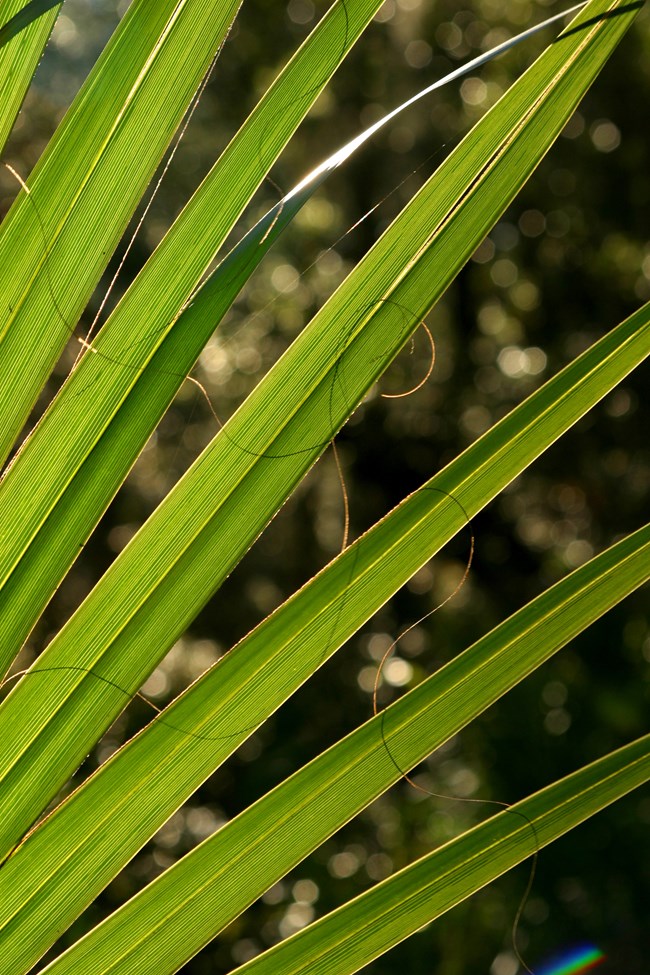
R. Rasmussen Photo A Lively Icon The maritime hammock and the species that thrive there are often the subject of some of the most iconic images of Florida and America’s southern states. There are now countless images of the twisting and turning branches of live oak trees covered in cascades of Spanish moss. These hardwood forests are found throughout the preserve and throughout the southern coastal United States. They may seem unassuming at first, as they are dominated by shades of green and are relatively quiet and motionless at first glance. Standing still in a maritime forest can change your perception of this. A closer look reveals layers of the forest, a flurry of activity, and countless signs of life. 
NPS Photo The lowest section of the forest is called the groundfloor. The groundfloor supports the two layers above, and also helps to recycle forest nutrients. Fallen branches and dead wood are decomposed by fungi and insects, and bacteria and mold break down leaf litter and dead animals. Animals like armadillos help to overturn soil while searching for insects, allowing decomposers to work more efficiently. Nutrients are returned to the soil where plants will utilize them, perpetuating the nutrient cycle. You can experience the wonder of the maritime forest on a hike through Theodore Roosevelt Area. |
Last updated: October 1, 2021
